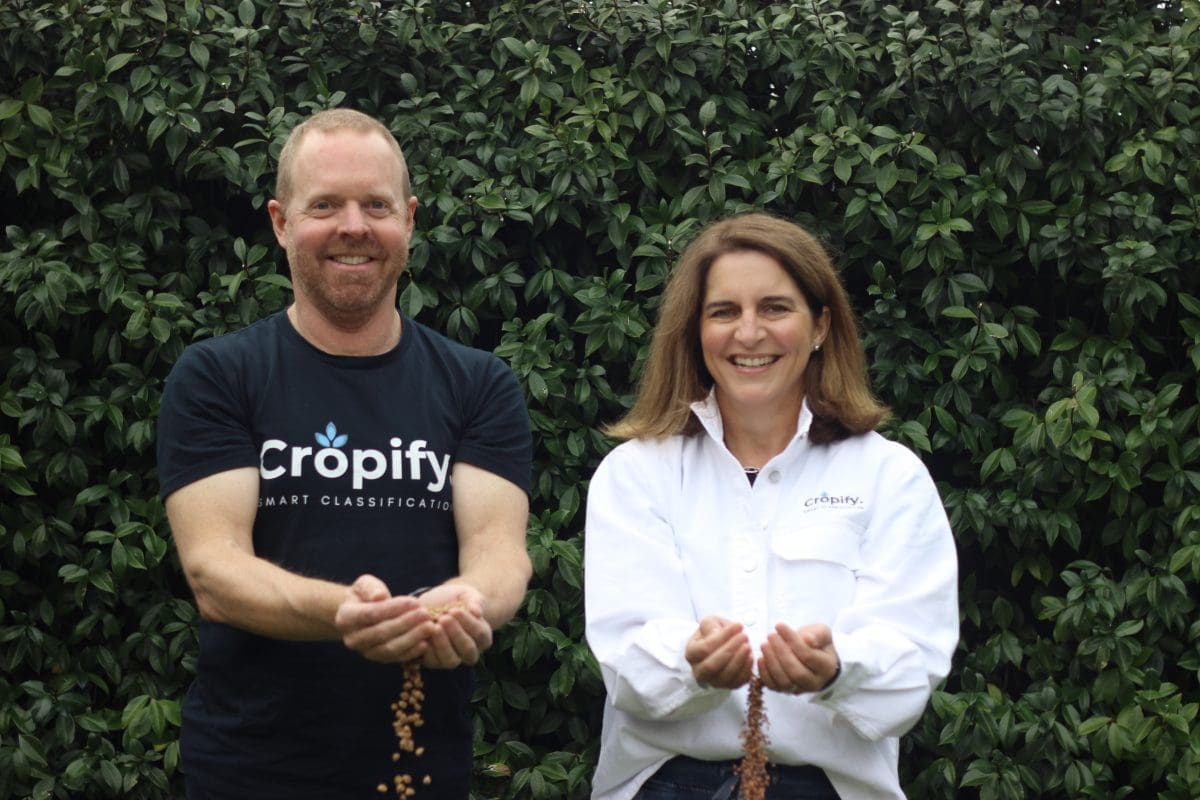
Cropify co-founders Andrew Hannon and Anna Falkiner. Photo: Eliza Hannon
SOUTH Australian husband and wife team Andrew Hannon and Anna Falkiner are working towards creating a more uniform pulse classification system, with their artificial intelligence-based (AI) technology, Cropify, currently in development.
Based on machine learning and AI techniques, the system will enable growers, grain handlers and marketers to classify a particular pulse sample in a way that is objective and repeatable.
After years in the grains industry, Mr Hannon saw a need to develop equipment that could create a more objective grain classification system.
He encountered similar technology already being used in the horticulture industry and, in 2019, decided to expand the system for grains.
“He could see, like most people who work in the sector will know, that there is a big issue there because it is all very subjective and done by the eye,” Ms Falkiner said.
“It is up to the experience of the classifier as to how good they are in identifying those defects and that derives the value of that crop load for the seller.
“We are using artificial intelligence to replace that subjective testing.”
The initial phase of the system is being designed for small red lentils, before being developed for other pulses and coarse grains.
“[Small type red lentils] were going to be the hardest to find a solution for.
“We thought that if we can crack the small type red lentils, the development from there is going to be a breeze.
“Plus, South Australia happens to be the largest producer of lentils in Australia.

The Cropify system will initially be developed for lentils before the team will move to other pulses. Photo: Cropify
“We will move on to chickpeas after that.”
Commercial trials soon
Ms Falkiner said the couple completed a successful proof of concept in 2019 and are just weeks away from having a minimal viable product (MVP) ready for trials.
She said at the current stage of development the system is showing 99 per cent accuracy with identifying a range of common defects.
“It has come a long way; it is a very time-consuming process and there is a lot of training data but the accuracy and the outputs will be very, very good.
“We have been working with local exporters in South Australia and they have been really supportive.
“We have been working collaboratively with [independent laboratories] and when we get our MVP we will be going back to those laboratories and getting them to check the results of the software and the usability of our hardware.
“We will modify and improve from there and we will also be going to bulk handlers to do commercial trials, hopefully in the next two months.”
Designed with growers in mind
Ms Falkiner said it is envisaged that the size and price of the finished product will make it accessible for the entire grains supply chain.
“Growers more and more are doing on-farm classifications before they use their storage and make marketing decisions.
“We are aiming for our solution to be able to be used by growers right through to the bulk handlers, marketers and exporters, so all the supply chain can have confidence in their classification.”
She said users will also be able to share the results instantly and be able to make quick decisions about whether a crop will be sold or kept in storage.
With no official accreditation or industry guidelines for the use of artificial technology in crop classification, the Cropify team says it will be up to the data to show that the system works.
“We will do our model versus a gold class classifier and show the results, but we will also be looking for industry endorsement,” Ms Falkiner said.
“Grain Trade Australia are also doing work in the space.
“They have a panel at the moment doing work around how they actually certify AI and new developments for grain classification and other tools coming forward with AgTech.”
AgTech grant funding
The potential of the Cropify system was also clear to South Australian government, which awarded the company a grant as part of its AgTech Growth funding.
The technology was one of nine to receive funding in the latest round.
Minister for Primary Industries and Regional Development Clare Scriven said the funding will accelerate the development and commercialisation of innovative agricultural technologies, like Cropify.
“This AgTech growth funding will provide significant productivity increases and employment opportunities within our agriculture industries,” Ms Scriven said.
“South Australian farmers have a long standing and proud history of being some of the most innovative in the world, and this funding will boost the opportunities to advance their AgTech, not just on farm but throughout the agriculture supply chain.
“These projects will help our primary producers overcome challenges and barriers they have identified and I’m looking forward to seeing firsthand how these projects are delivered over the coming months.”



HAVE YOUR SAY